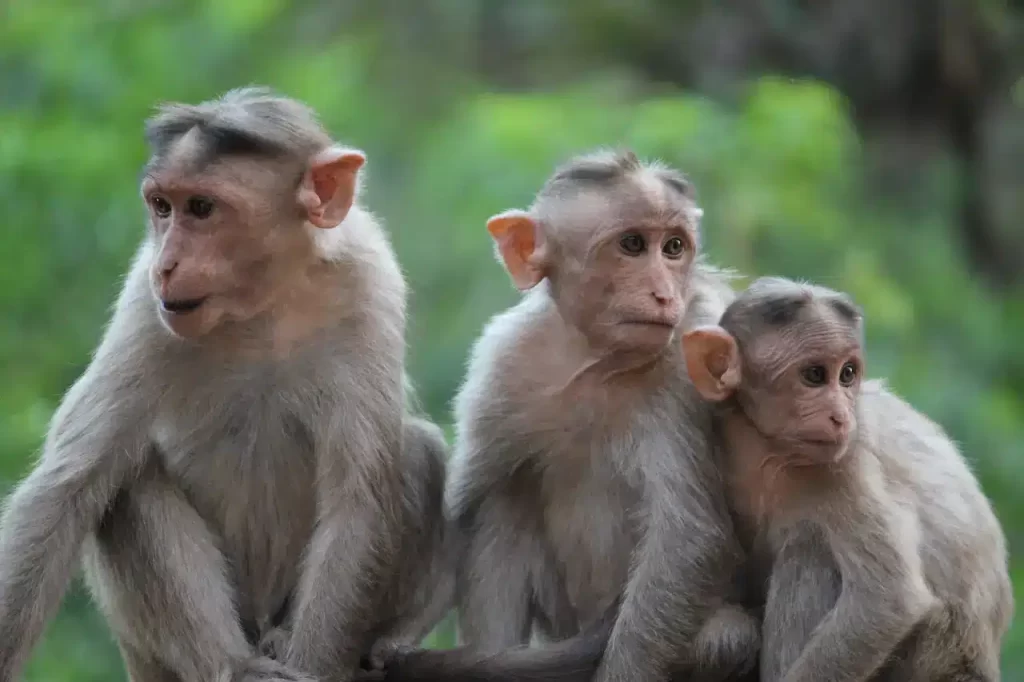What Eats Monkeys: Understanding the Predators of Primates
Monkeys, belonging to the primate order, are diverse and widespread across various habitats around the world. Despite their agility and social behaviors, monkeys face numerous predators that threaten their survival. This article delves into the different types of predators that prey on monkeys, their hunting strategies, and the impact of these predations on monkey populations.
Major Predators of Monkeys
Monkeys have a wide range of predators, including land carnivores, birds of prey, reptiles, and even other primates. Here are some of the most notable predators:
Land Carnivores:
- Lions: While lions primarily prey on larger animals like antelopes, they also target monkeys, especially those that forage at ground level.
- Leopards: Known for their stealth and agility, leopards are significant predators of monkeys in Africa. They often climb trees to catch their prey.
- Tigers: Tigers are skilled hunters that can catch monkeys, especially in Asian forests. They stalk their prey for extended periods before making a fatal attack.
- Jaguars: In South America, jaguars are top predators that ambush and kill monkeys. They deliver fatal blows by biting the spine, causing death by heart attack.
- Cheetahs: Although cheetahs mainly hunt antelopes, they are opportunistic and will catch monkeys if they encounter them.
- Ocelots: These small, agile cats in South America hunt monkeys in the trees, making them formidable predators.
Birds of Prey:
- Harpy Eagles: One of the largest and most powerful eagles, harpy eagles prey on various monkey species, including saki, capuchin, and night monkeys.
- Crested Eagles: These eagles are known to prey on infant tamarins and squirrel monkeys.
- Black-and-White Hawk Eagles: Smaller but effective predators, these eagles use the “soar and stoop” tactic to attack monkeys in the mid to upper canopy.
Reptiles:
- Snakes: Venomous snakes like vipers and non-venomous snakes like pythons and anacondas pose a significant threat to monkeys. These snakes are opportunistic feeders and can ambush monkeys in trees or on the ground.
- Crocodiles and Alligators: Monkeys that live near water bodies are vulnerable to attacks from crocodiles and alligators. These reptiles can stay hidden in the water and quickly snatch an unwary monkey.
Other Primates:
- Chimpanzees: Chimpanzees are known to hunt and kill smaller monkey species. They form hunting parties and actively chase their prey through the forest, posing a significant threat to monkey populations.
Humans:
- Hunting and Habitat Destruction: Humans are the biggest threat to monkey populations. Monkeys are hunted for bushmeat, and their habitats are destroyed due to deforestation, agriculture, and urban development. Humans also trap and kill adult monkeys to capture their young for the pet trade.
Hunting Strategies and Adaptations
Predator Hunting Strategies:
- Ambush and Stealth: Predators like leopards and jaguars use stealth and ambush tactics to catch monkeys off guard.
- Team Hunting: Chimpanzees and hyenas often hunt in groups, increasing their chances of success.
- Aerial Attacks: Birds of prey like harpy eagles and crested eagles use their speed and agility to dive down and attack monkeys in the trees.
Monkey Adaptations:
- Social Behavior: Monkeys live in groups, which increases their vigilance and ability to detect predators. They use complex alarm calls to warn each other of potential threats.
- Mobbing: When a monkey is attacked, the group may mob the predator, trying to chase it away.
- Physical Defenses: Larger primates like chimpanzees and gorillas can fight off some predators due to their size and strength.
Impact on Monkey Populations
The predation pressure on monkeys can have significant impacts on their populations and behaviors.
Population Decline:
- Habitat Loss and Fragmentation: Human activities like deforestation and urban development not only reduce habitats but also fragment them, making it easier for predators to encounter monkeys.
- Overhunting: The practice of hunting monkeys for bushmeat and capturing them for the pet trade can lead to significant population declines.
Behavioral Changes:
- Increased Vigilance: Monkeys may become more vigilant and alter their behavior to avoid predators, which can impact their foraging and social activities.
- Habitat Avoidance: Monkeys may avoid certain areas known to be frequented by predators, leading to reduced access to food and other resources.
FAQ Section
Q: What are the main predators of monkeys?
- A: The main predators of monkeys include land carnivores like lions, leopards, tigers, jaguars, and cheetahs; birds of prey like harpy eagles and crested eagles; reptiles like snakes, crocodiles, and alligators; and other primates like chimpanzees. Humans are also significant predators due to hunting and habitat destruction.
Q: How do predators like leopards and jaguars hunt monkeys?
- A: Predators like leopards and jaguars use stealth and ambush tactics to catch monkeys off guard. They often climb trees to reach their prey.
Q: What role do birds of prey play in monkey predation?
- A: Birds of prey, such as harpy eagles and crested eagles, are significant predators of monkeys. They use aerial attacks, diving down from above to catch their prey in the trees.
Q: How do monkeys adapt to predation?
- A: Monkeys adapt to predation through social behavior, living in groups that increase vigilance and using complex alarm calls to warn each other of potential threats. They also engage in mobbing behavior to chase away predators.
Q: What is the impact of human activities on monkey populations?
- A: Human activities such as hunting for bushmeat, capturing monkeys for the pet trade, and habitat destruction due to deforestation and urban development significantly threaten monkey populations and lead to population declines.
Table: Key Information
| Category | Description |
|---|---|
| Land Carnivores | Lions, leopards, tigers, jaguars, cheetahs, ocelots |
| Birds of Prey | Harpy eagles, crested eagles, black-and-white hawk eagles |
| Reptiles | Snakes (venomous and non-venomous), crocodiles, alligators |
| Other Primates | Chimpanzees |
| Humans | Hunting for bushmeat, capturing for pet trade, habitat destruction |
| Hunting Strategies | Ambush, stealth, team hunting, aerial attacks |
| Monkey Adaptations | Social behavior, alarm calls, mobbing, physical defenses |
| Impact on Populations | Population decline, habitat loss and fragmentation, behavioral changes |
Additional Resources
For more detailed information on the predators of monkeys and their ecological impact, you can refer to various wildlife and conservation resources.
Wikipedia Link
- Primate Predators: Wikipedia
This comprehensive guide provides an in-depth look at the various predators that threaten monkey populations, their hunting strategies, and the adaptations monkeys have developed to avoid predation. Understanding these dynamics is crucial for conservation efforts aimed at protecting these diverse and fascinating creatures.
Conclusion
The predation pressure on monkeys is a complex issue involving a variety of predators and human activities. By understanding the different types of predators, their hunting strategies, and the adaptations monkeys have developed, we can better appreciate the challenges these primates face and the importance of conservation efforts to protect them.
Final Thoughts
Monkeys, with their diverse species and habitats, play a vital role in their ecosystems. However, they are under significant threat from various predators and human activities. Efforts to conserve and protect monkey populations are essential for maintaining the balance of their ecosystems and ensuring the long-term survival of these fascinating creatures.



